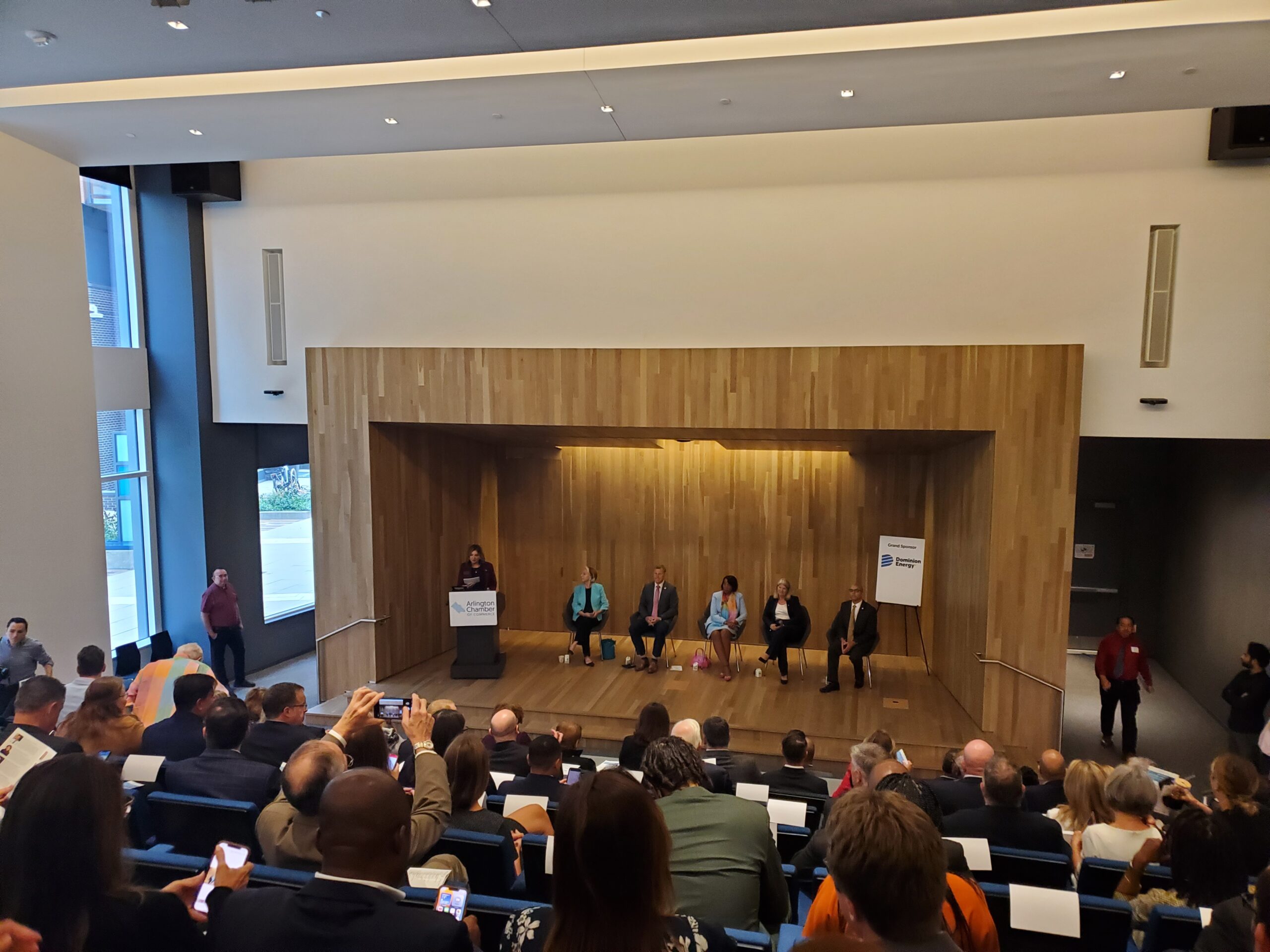At a recent August 22 gathering of Northern Virginia’s regional political leaders and legislative conference, a variety of topics related to economic development were discussed.
More than 200 business, government, and community leaders gathered for the Summit at Marymount University – Ballston Center. The program included a moderated discussion among all-Democrat leaders with Arlington County Board Vice-Chair Libby Garvey, Prince William County Board of Supervisors Chair at-Large Ann B. Wheeler, Fairfax County Board of Supervisors Chair Jeff McKay, Loudoun County Board of Supervisors Chair Phyllis Randall, and City of Alexandria Mayor Justin Wilson. U.S. Senator Mark Warner was the Keynote speaker. NBC Washington’s News4 Today Anchor Jummy Olabanji moderated the program. Following are some of the points raised among the participants.
Economic Development Initiatives
Fairfax County is making strides in its economic development by actively repurposing existing buildings, showing a strong commitment to sustainable growth. Meanwhile, Loudoun County is facing a 6% vacancy rate in office buildings, and there’s a realization that occupancy might not return to pre-pandemic levels. A significant factor contributing to this challenge includes the lack of childcare facilities (a predominant surveyed concern for women) and the lengthy commutes (mostly a concern expressed by men), highlighting the importance of addressing these issues for a robust workforce.
Regional Economic Growth
Prince William County is actively advocating for more industrial land, recognizing the need to diversify economic development. The City of Alexandria stands out for its focus on adaptive reuse, which currently ranks it second in the nation, trailing only Los Angeles.
Challenges and Innovative Solutions
The leaders came to a consensus that every government building should offer childcare facilities, treating it as a vital utility. With over 130,000 vacant jobs in the region, it’s clear that one major factor is the lack of affordable housing. This, coupled with transportation challenges, is stifling economic growth.
This group, however, didn’t dig into evidence and impact of broader economic headwinds and recessionary conditions in stifling growth, i.e. “Bidenomics”; for example lack of investment capital for growth, persistently higher inflation rates with resultant wage/price and inventory cost pressures, high and rising interest rates (leading to record personal credit leverage, defaults and low savings rates), higher child poverty rates, higher oil/gas prices, decreasing trade, etc. While the Federal Reserve Bank of Richmond 5th District Non-Manufacturing survey results for August show some move from negative to neutral small business optimism, the actuals are far below expected. NFBI surveys indicated similar; small business owners expecting better business conditions over the next six months “deteriorated seven points from July to a net negative 37%, however, 24 percentage points better than last June’s reading of a net negative 61% but still at recession levels.”
Prince William County aims to simplify processes to make it easier for businesses and investors to operate within the region. Loudoun County is focusing on “attainable” housing, a crucial shift from merely “affordable” housing. Meanwhile, Alexandria is exploring zoning changes to spark competition in the housing market and keep costs manageable.
Transportation and Infrastructure
The importance of the Metro system was highlighted, with discussions revolving around securing dedicated funding sources from both Virginia and federal agencies to ensure its continued success. Regional transit systems, including bus rapid transit, were also recognized as equally vital components of the area’s transportation infrastructure.
Workforce and Education
There’s a clear disconnect between the skills demanded by the job market and the skills of the current workforce. Urgent steps need to be taken to expedite vocational training and certification programs to make students “job-ready” right after high school. Additionally, the need for more internships was acknowledged to bridge this skills gap.
Insights from Senator Warner
Senator Warner had several key points to share. He advocated for R&D tax credits aimed at “soft capital,” particularly a human capital tax credit. The effectiveness of Opportunity Zones was questioned, with an emphasis on rethinking housing solutions in a bipartisan manner. The “lift-up act,” which offers 20-year mortgages at 30-year rates, received his support as a promising initiative. Senator Warner also stressed the importance of revisiting promises made by corporations regarding economic development post-George Floyd, totaling $300 billion.
Encouraging workers to return to offices was considered a priority. Optimizing Metro’s operating costs was seen as a prerequisite for further federal investment. Progress was reported on a potential second Potomac crossing for rail.
Senator Warner did express metered confidence in the Federal Reserve’s ability to combat inflation without causing a recession. However, concerns were raised about the delay in implementing the Chips Bill and the significance of China’s youth unemployment data as indicators of future economic issues. He also underscored the importance of having individuals in government who can navigate complexities and reach agreements, highlighting the importance of avoiding inaction, particularly in immigration policy.
